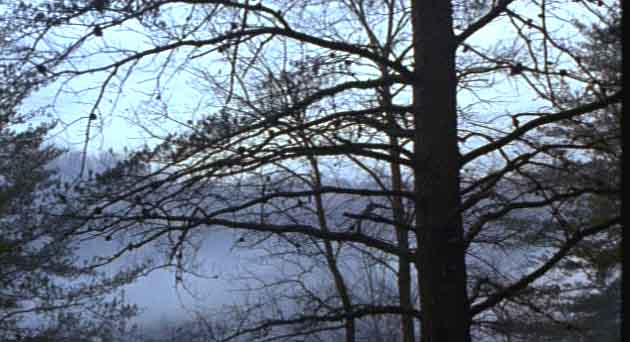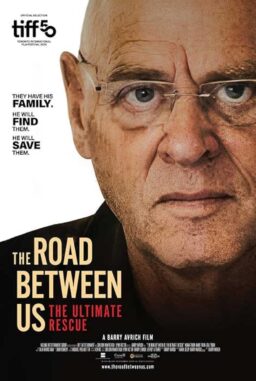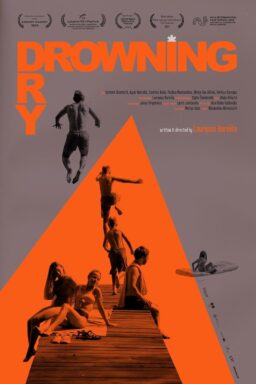

From Mike Calia:
Bare tree branches set against an oppressive grey sky, meeting somewhere between impressionism and expressionism and setting the palate for the whole movie (save for the blaring reds and wood tones that pop up later in the institutional settings). Then the camera points down, almost straight down (setting up the well scenes in Buffalo Bill’s lair, as well), to the bottom of a hill, where Clarice Starling enters the frame and starts climbing and doesn’t stop for the rest of the movie. It’s part obstacle course, part fairy-tale woods, and not one frame is wasted. Add in Howard Shore’s haunting score (unjustly snubbed by the Academy that year) and you have the perfect blend of modern police procedural suspense and gothic horror.

JE: Good one, Mike! This is such a deceptively simple beginning (and it takes you a little while to figure out what’s going on), but you’re absolutely right — it leaves you with a feeling, of Clarice running through the cold, hazy, wintry woods, that stays with you for the whole picture. (Demme is so unfussy and elegant.) There’s something about the starkness and emptiness of those titles — white outlines filled with black — that’s chillingly effective, too. And then there’s the way Clarice glances to the left — not behind her down the vertiginous path from whence she came, but off in another direction — before running out of the frame to the right. You get the feeling she’s running from something, perhaps something from the past about to pounce into the present, and she isn’t quite sure where it will come from.

By the way, Dr. Lecter offers an excellent Socratic lesson in the principles of critical thinking here:
Dr. L: I’ve read the case files, have you? Everything you need to know to find him is right there in those pages.
Clarice: Then tell me how.
Dr. L: First principles, Clarice. Simplicity. Read Marcus Aurelius — of each particular thing ask: What is it in itself? What is its nature? What does he do, this man you seek?
Clarice: He kills women.
Dr. L: No! That is incidental. What is the first and principal thing he does? What needs does he serve by killing?
Clarice: Anger. Social acceptance. Sexual frustration —
Dr. L: No! He covets. That is his nature. And how do we begin to covet, Clarice? Do we seek out things to covet? Make an effort to answer now…
Clarice: No. We just —
Dr. L: No. We begin by coveting what we see every day. Don’t you feel eyes moving over your body, Clarice? And don’t your eyes seek out the things you want?
Those words ought to be inscribed as an example in every classroom. See each thing for itself. Then consider its context. Understand how your enemy or adversary thinks. What may seem most important to you, may be only incidental to him…










